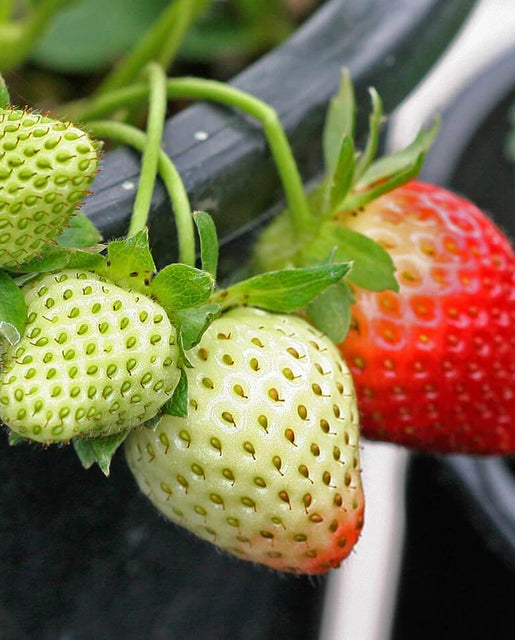Germination is the trickiest aspect to growing strawberries. Be patient, and try the tricks below.
Tuck strawberry seed packet inside a sealed plastic bag or airtight container and place in the refrigerator freezer (not deep freeze) for 3-4 weeks. After removing the bag or container, do not break the seal until it (and its living contents) have reached room temperature. This may take several hours. Err on the side of caution. Opening the package too quickly may result in water condensing on the cold seeds, and this will reduce your chances of success.
Once the sealed package has “thawed” to room temperature, the seeds are ready to plant. Sow the seeds on the surface of pre-moistened, sterilized seed starting mix in trays or small containers. Place these on a piece of felt or other thick cloth that has its end sitting in water. The idea is to wick up water from below so that the seedling medium stays constantly and evenly damp until germination.
An alternative method is to sow strawberry seeds on the surface of moistened soil in a germination tray (or in small pots). Tuck the tray or pots inside a sealed plastic bag, and store in the refrigerator for 3-4 weeks.
Move the seeded trays under bright fluorescent lights at a constant temperature of 18-24°C (65-75°F). Seedling heat mats work very well. Germination may take anywhere from 7 days to 6 weeks: Be patient. Once germination occurs, increase ventilation around the plants to prevent damping off.
Once the seedlings develop their third true leaf, they can be gently transplanted into their own pots. Be sure to harden strawberry seedlings off carefully and gradually before transplanting outside.


















